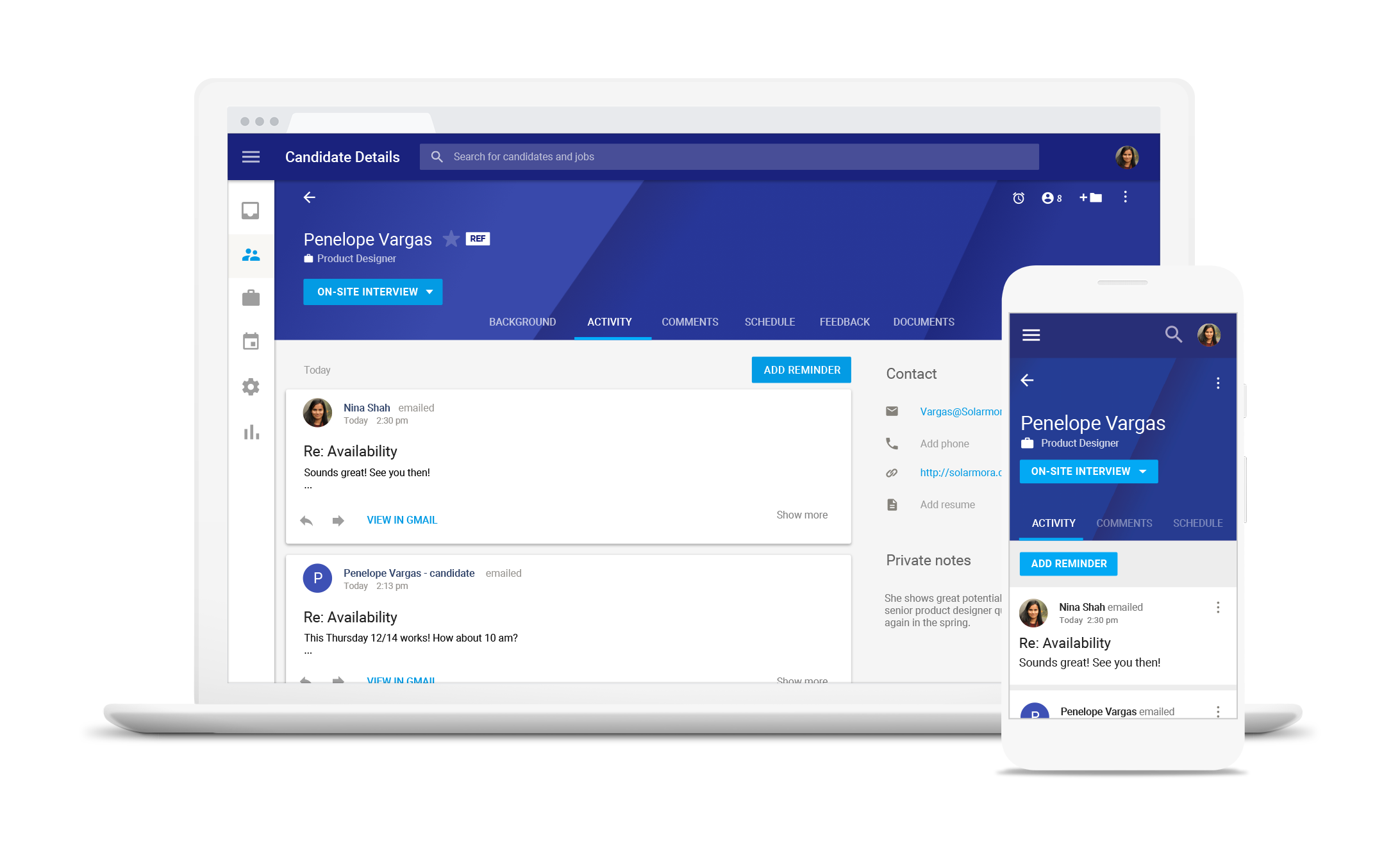Google Hire was a cloud-based applicant tracking system (ATS) developed by Google to assist small and medium-sized businesses in streamlining their hiring processes. Launched in 2017, it offered a centralized platform for managing job postings, candidate applications, and interview scheduling, making it an appealing choice for organizations seeking to simplify recruitment.

One of its key strengths was its seamless integration with other Google tools, such as Gmail, Google Calendar, and Google Sheets, allowing users to manage their hiring activities within the G Suite ecosystem.
Despite these innovative features, the platform struggled to compete in a crowded market dominated by established ATS providers.
On September 1, 2020, Google officially discontinued the service, citing a shift in strategic priorities as the primary reason for its closure. This article provides an in-depth look at the top alternatives to Google Hire, helping businesses find the right tools to streamline their hiring processes.
.png)
Google Hire Alternatives
Since it is no longer available, businesses need reliable alternatives to manage their recruitment needs effectively. Below, we start with a comparison between Google Hire and Manatal, a modern applicant tracking system, followed by a list of other noteworthy alternatives with links to relevant articles for further exploration.
Manatal serves as a viable alternative to Google Hire, providing features such as AI-powered candidate recommendations, comprehensive integrations, and an intuitive interface. Its competitive pricing and solid functionality position it as a suitable option for businesses seeking a modern recruitment solution to replace the tool.
For recruiters still yearning for features similar to Hire by Google, a 14-day free trial is available for Manatal for a test drive to see if the features fill the void left by the Google product.
{{cta}}
Other Alternatives to Google Hire
Beyond Manatal, several other ATS platforms can effectively replace Google Hire, each catering to different business needs. Below is a list of alternatives:
- Workable: An all-in-one solution with job board posting and candidate sourcing features. Read more in the Workable pricing guide.
- LinkedIn Recruiter: A leading hiring tool allowing recruiters to source candidates from their large professional network. Find out more about how much LinkedIn Recruiter costs: Pricing, Plans, and Features.
- HireEZ: A talent acquisition platform that streamlines candidate sourcing, engagement, and recruitment marketing.
- LeoForce (Arya): An AI recruiting platform that allows you to gain insights into each candidate’s suitability for an open role.
Read more about hiring apps that you can use to streamline your recruitment efforts.
Why Was Hire by Google Sunsetted?
In 2019, when Google announced the discontinuation of Hire by Google, web chatter and speculation at the time focused on several key points:
- Surprise but Not Shocking: Many were surprised by the abrupt end of Hire, launched just two years earlier in 2017, but not entirely shocked due to Google’s history of terminating products. Industry observers noted that Hire’s short lifespan fit the “Google Graveyard” pattern, where products like Google Reader and Google+ were also axed.
- Market Fit Issues: Speculation centered on Hire’s inability to compete in the crowded applicant tracking system (ATS) market against established players like Workday and BambooHR. Commentators suggested Hire lacked unique features, as many competitors already integrated with G Suite, diminishing its appeal.
- Strategic Misalignment: Web discussions highlighted that Hire didn’t align with Google’s core business model, which prioritizes high-revenue products like Google Cloud. Analysts speculated Google preferred to partner with HR software vendors rather than compete with them, especially after acquiring Bebop, where Hire’s tech originated.
- Leadership and Acquisition Context: Some chatter pointed to the acquisition of Bebop in 2015 for $380 million and Diane Greene’s role in Google’s cloud business. After Greene’s departure, speculation arose that Hire lost internal support, contributing to its demise.
- Regulatory Concerns: There was speculation about regulatory pressures, particularly in the EU, where Google faced antitrust scrutiny. Some suggested Google’s legal team saw Hire as a potential liability, prompting its shutdown to avoid further complications.
Conclusion
The discontinuation of the platform in 2020 prompted businesses to seek robust alternatives to streamline recruitment. While Google Hire offered G Suite integration, its limited features couldn’t compete with established ATS providers. Manatal emerges as a strong replacement, with AI-driven candidate recommendations, integration with over 2,500 job boards, and pricing starting at $15/user/month.
Frequently Asked Questions
Q: What should recruiters look for in a Google Hire alternative?
A: Recruiters seeking an alternative should focus on platforms with user-friendly interfaces, seamless integrations, advanced filtering, robust analytics, strong security, and reliable support to ensure efficient and secure hiring processes.
- User-Friendly Interface: Simplifies navigation and boosts team productivity.
- Seamless Integrations: Connects with email and HR tools for streamlined workflows.
- Advanced Filtering: Manages large applicant data and eases candidate selection.
- Robust Analytics: Offers insights into recruiting metrics and performance.
- Security & Compliance: Protects sensitive data with industry-standard measures.
- Reliable Support: Provides ongoing assistance and regular updates.
Q: Are there free alternatives to Google Hire?
A: Several free alternatives are available for recruitment and applicant tracking. Manatal offers a 14-day free trial for users to test essential recruitment features. OpenCATS is an open-source ATS that is customizable to fit specific recruitment needs. Recruitee provides a free plan for startups with necessary recruitment tools, while MightyRecruiter offers a free plan with a large resume database and job posting capabilities. These options, including Manatal’s 14-day trial, are cost-effective solutions for startups and small businesses to manage hiring effectively.
Q: How do I migrate data from Google Hire to a new ATS?
A: Migrating data to a new ATS requires careful planning, data export and backup, field mapping, testing, and validation to ensure a seamless transition. Clear communication with your team is essential throughout the process.
- Assess Data Needs: Identify candidate profiles, resumes, notes, and job postings for transfer.
- Export Data: Save Google Hire data in CSV or Excel format compatible with the new ATS.
- Backup Data: Secure all essential data before migration.
- Evaluate ATS Import: Check new ATS import capabilities and use provider support if available.
- Map Fields: Align data fields between systems to preserve integrity.
- Test Migration: Import a small data subset to catch issues early.
- Validate Data: Review migrated data in the new ATS for accuracy and completeness.
- Communicate Clearly: Keep team and stakeholders informed to ensure recruitment continuity.
Citation





.png)






















.webp)

.webp)

.webp)
